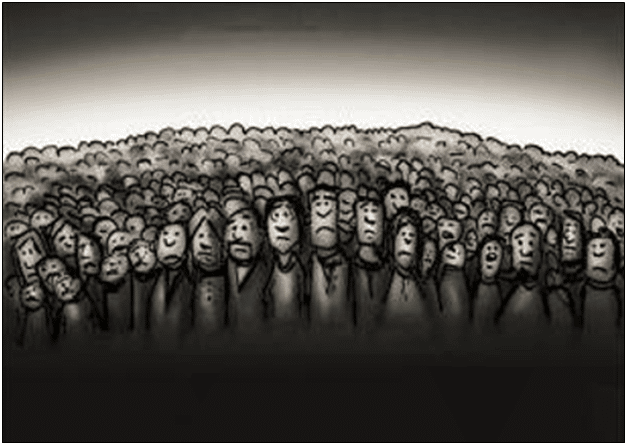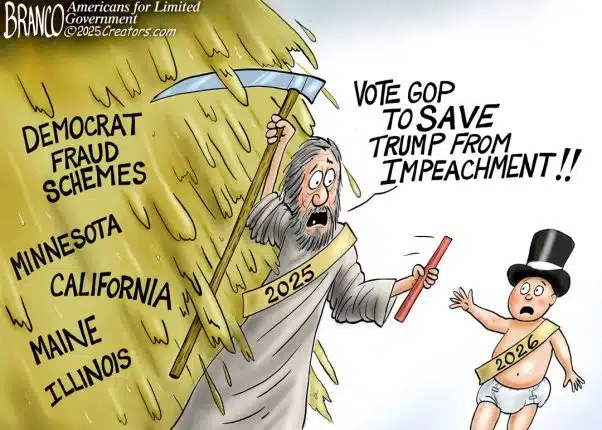
Non-seasonally adjusted unemployment continued claims have steadily increased by 755,000 since Oct. 2022, the latest data from the U.S. Department of Labor shows, amid a smattering of layoffs in certain sectors as labor markets continue to show signs they have no further room for expansion amid sticky elevated inflation, interest rates and as households are reaching the max on their credit cards.
There are now 1.95 million Americans who keep coming back for continued unemployment assistance, from its 1.19 million level in October.
This comes after peak inflation—I should add, we hope it was peak inflation—was reached in June 2022 at about 9 percent over the 12-month stretch, and remains elevated but has slowed to 6.4 percent in the latest reading. Which, is what usually happens as inflation and overall unemployment tend to run opposite of one another throughout the entire postwar period, looking at Bureau of Labor Statistics data over the long haul.

In Jan. 1948, consumer inflation peaked at 10.2 percent and by Oct. 1949, unemployment had ticked up to a high of 7.9 percent before receding as the recovery ensued.
In April 1951, inflation topped off at 9.6 percent, and by Sept. 1954, the recession had come and unemployment reached 6.1 percent.
In March 1957, inflation reached its high in the business cycle of 3.6 percent—it actually doesn’t matter if it gets to really high levels or not, just that the peak is reached—and by July 1958 unemployment had reached 7.5 percent.
In Feb. 1970, inflation hit 6.4 percent and by Dec. 1970, unemployment hit 5.6 percent.
In Nov. 1974, inflation peaked at 12.2 percent and by June 1975, unemployment hit 8.8 percent.
In April 1980, inflation hit its highest level in the post war period at 14.6 percent, and by July 1980 unemployment—which was already creeping upward—had immediately ticked up to 7.8 percent from 6.3 percent in March 1980.
In Sept. 1981, inflation had hit another high of 10.96 percent, and by Nov. 1982, unemployment had reached 10.8 percent.
In Dec. 1990, inflation reached 6.25 percent, followed by 7.8 percent unemployment in July 1992.
In March 2000, inflation peaked at 3.76 percent — remember, the size of the inflation doesn’t matter, just that it reach its pinnacle in the business cycle — and by June 2003, unemployment reached 6.3 percent before subsiding.
In Aug. 2008, inflation peaked at 5.3 percent and by Oct. 2009 unemployment had skyrocketed to 10 percent.
And in the Covid recession, it’s tougher to gauge because the recession was not caused by the economy overheating per se but by the artificial economic lockdowns and production halts as people were subsidized by governments not to work. That said, inflation had peaked in July 2018 at 2.85 percent and by April 2020, unemployment hit 14.7 percent.
Like clockwork, in every single recession, peak inflation and employment was followed by a dipping of the inflation rate and an increase in the unemployment rate, sometimes by a lot, and sometimes by a bit. On average, the process appears to take about 15 months, but the range is as few as 3 months to as many as 39 months.
In our current instance, with the levels of unemployment continued claims coming in, though, it is not yet discernible in the unemployment rate itself, which remains at historic lows of 3.4 percent. It appears that if peak inflation was indeed the 9 percent rate we saw in June 2022, then all of the unemployment remains ahead of us, whatever size that might be.
Of course there are other factors, including the Federal Reserve’s posture on interest rates determined to tackle the consumer inflation. So far, the Fed has not dared to bring the Federal Funds Rate, which effectively is at 4.3 percent, above the consumer inflation rate, that is currently at 6.4 percent.
When the Fed raises interest rates on banks in this manner, which in turn hikes interest rates on consumers, it soaks up the additional dollars that were created during the economy’s expansion period. That means that debt service costs are increasing at the same time as consumer prices, which eventually interdicts consumer spending, softening demand and that’s when the unemployment kicks upward.
Sure enough, the annual growth of consumer credit appears to have just hit a seeming high of 8.1 percent in Oct. 2022, and has flattened and is slightly down to 7.8 percent annualized in Dec. 2022.

The implication is that the either the Fed is waiting for or hoping that consumer inflation will get below that of the Federal Funds Rate without it having to pop the bubble itself. That said, wartime spending or other emergency spending by Congress or Fed easing could also reinstate the inflation cycle, too, although the Fed appears to remain committed to tightening in the current circumstances, and with the U.S. House of Representatives controlled by Republicans, divided government has a habit of cooling spending.
As the Fed continues to hike interest rates, albeit at a slower pace than before, consumer interest costs will continue to rise until they capitulate on spending, demand weakens and the layoffs begin at a larger pace. But, how unemployment will go in what appears to be an imminent recession could in many ways be tamed by the ongoing labor shortages brought on by low fertility rates and the Baby Boomer retirement wave, akin to a wartime draft situation where the unemployment rate remains artificially low. And we might be on the brink of war anyway, so there’s that.
Assuming no world wars, this is where we appear to be in the current cycle, past peak inflation and awaiting a commensurate upturn in joblessness. Unless 9 percent inflation in June 2022 was not peak inflation — there’s a small chance but it’s still possible — and then we might need to reset our clocks. But the weekly unadjusted continued unemployment claims are still worth keeping your eyes on. As usual, stay tuned.
Robert Romano is the Vice President of Public Policy at Americans for Limited Government Foundation.






